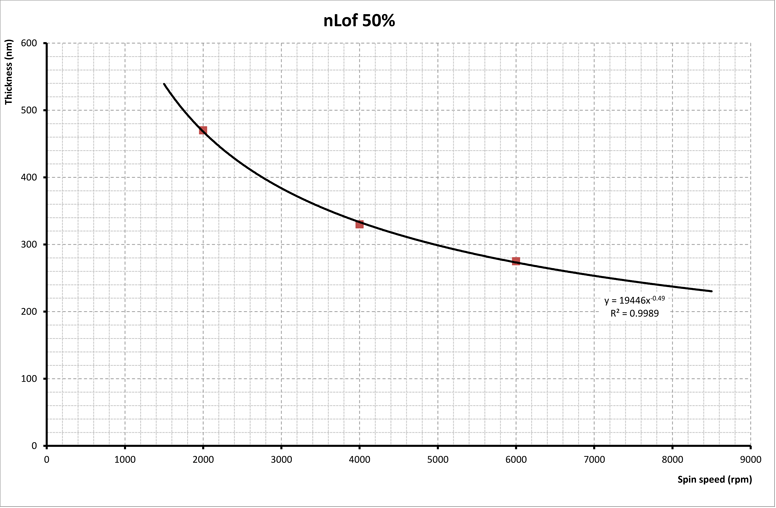AZ® nLOF™ 2000 is a PGMEA solvent based photo resist from Clariant. It is more sensitive than HSQ and has a very good thermal stability. nLOF is a photoresist that is also sensitive to electron beam and, because it is a chemically amplified resist, it requires a pre and post exposure bake. See the process page for details. It has good dry etch selectivity, and is a good choice for SiO2 plasma etching. For photolithography we get nLOF in 1.3µm grade, which is too thick for most ebeam uses, so we dilute it 1:1 with PGMEA.
Polarity
Negative
Doses
Typical large areas will expose correctly between 40 and smaller features will need around 140-200µC/cm2. The dose is extremely sensitive to pre and especially post-expose baking temperature.
Resolution
It has limited resolution, and the best we’ve been able to achieve is around 70nm.
Chemical capabilities
When this resist is exposed it does not dissolve very well in remover so for striping we recommend the use of remover and oxygen plasma.
Quick process
Before processing choose beaker from the nLOF shelf. Rinse it with a small amount of developer (AZ726 MIF).
| Step | Description | Program/Parameters |
|---|---|---|
| 1 | pre-processing – adhesion | 5min oxygen plasma at high power, or Piranha bath followed by oxygen plasma/5min dehydration bake |
| 2 | substrate cooling | 1min |
| 3 | nLOF coating | see spin curve |
| 4 | pre-exposure bake | 1min45sec at 115°C on the hotplate |
| 4 | substrate cooling | 1min |
| 6 | resist exposure | on the ebeam, doses between 40 and 200µC/cm2 |
| 7 | post-exposure bake | 1min at 115°C on the hotplate |
| 8 | resist development | 30” into developer AZ726 MIF on the water/base wet bench |
| 9 | substrate rinsing and drying | rinse with DI water and dry with nitrogen |
When you have finish empty beakers into the water waste, rinse the beakers with water and put them into the nLOF recycle tray (which is on the water/base wet bench).
Spin curve
